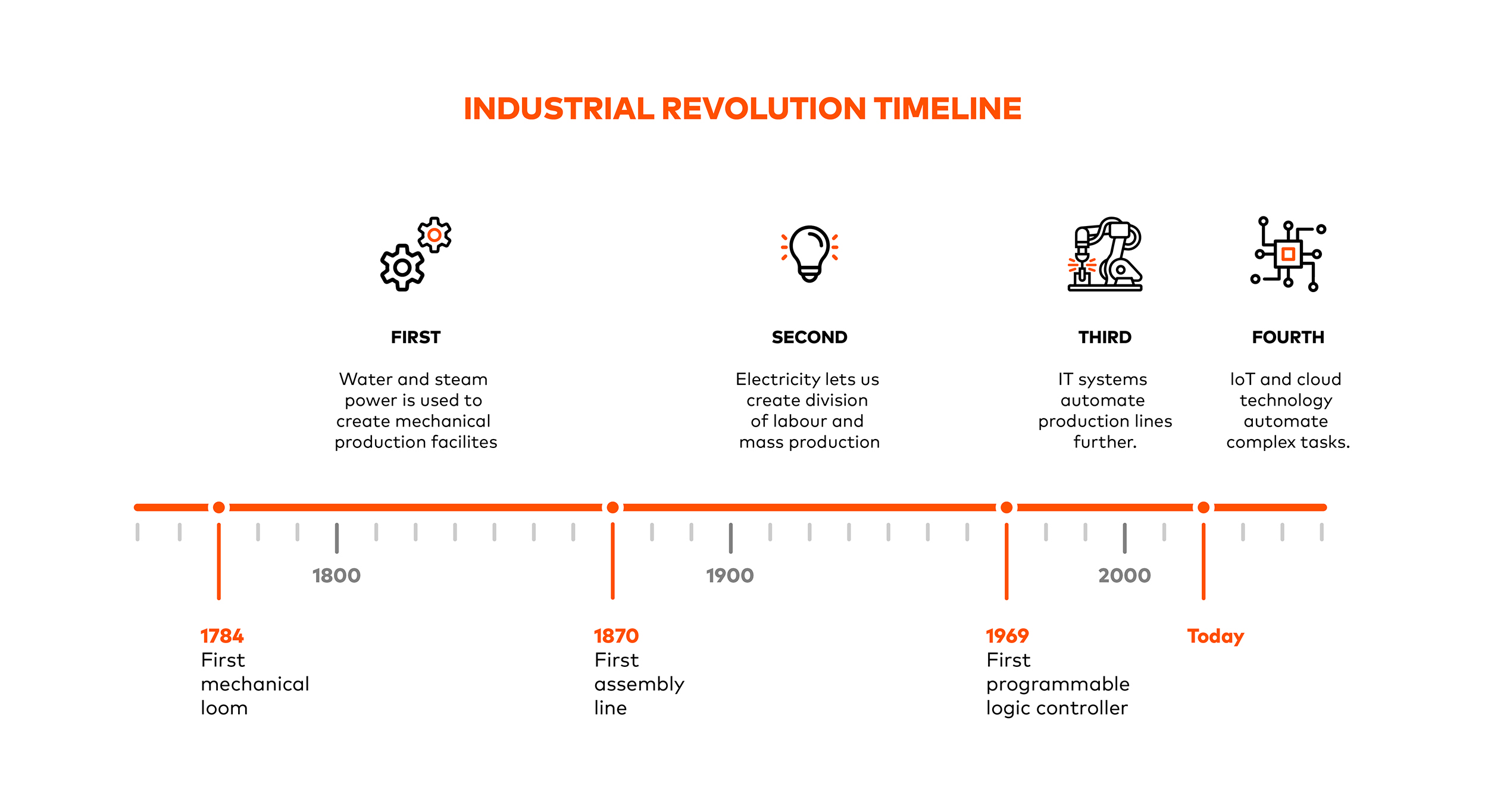What is Industry 4.0? And how to prepare for it
The fourth industrial revolution, also known as Industry 4.0, is transforming the way we live and work. This new era of digitalization and automation is bringing about significant changes and opportunities, but it also presents new challenges that must be addressed. It is crucial for businesses and organizations to prepare for Industry 4.0 to stay competitive and thrive in this new environment.
In this blog post, we will explore the importance of Industry 4.0 and how to prepare for it.
What is Industry 4.0 and how did it come about?
The concept of Industry 4.0 emerged in the early 2010s as part of the German government’s High-Tech Strategy 2020, which aimed to boost innovation and research in the manufacturing sector. The concept of Industry 4.0 was inspired by the previous three industrial revolutions:
- 1st Industrial Revolution was characterized by the use of water and steam power to mechanize production.
- 2nd Industrial Revolution saw the introduction of electricity and assembly line production.
- 3rd Industrial Revolution, also known as the digital revolution, was marked by the use of computers and automation.
Industry 4.0 represents a shift from traditional, linear manufacturing processes to dynamic, interconnected systems that are capable of responding to real-time data.

Some of the technologies driving Industry 4.0 include:
- Internet of Things (IoT)
- Artificial Intelligence (AI)
- Big data analytics
- Cloud computing
- Robotics and automation
- Augmented Reality (AR) and Virtual Reality (VR)
All these technologies enable the creation of a smart, connected, and highly automated manufacturing and production environment.
Why is it so important?
Industry 4.0 offers many potential benefits, including increased efficiency, reduced costs, and improved quality. By leveraging advanced technologies, companies can automate processes, optimize operations, and improve decision-making.
Additionally, Industry 4.0 creates new opportunities for innovation and growth. For example, by using real-time data analytics, companies can identify patterns and trends that can inform new product development or business strategies. Augmented reality (AR) and virtual reality (VR) can enhance product design and training, while 3D printing can enable faster and more cost-effective prototyping.
However, there are also potential risks and challenges associated with Industry 4.0 that must be addressed. One of the most significant challenges is the need for cybersecurity measures to protect against cyber-attacks and data breaches. As companies increasingly rely on interconnected systems and data, the potential for security vulnerabilities grows.
Another challenge associated with Industry 4.0 is the potential for job displacement. As automation and AI become more prevalent, some jobs may become obsolete, while others may require new skills and competencies.
It is important to address these challenges to ensure that Industry 4.0 is a positive force for change.
How can we prepare for it?
To prepare for Industry 4.0, businesses and organizations need to embrace digital transformation and innovation. This can involve:
- Investing in digital technologies, infrastructure and new processes, such as automation, data analytics, and predictive maintenance
- Providing training and upskilling opportunities for employees to ensure they have the necessary skills to work in a highly automated and digital environment
- Developing a culture of innovation and continuous improvement
- Collaborating with other businesses or organizations to share knowledge and best practices
- Embracing new business models and revenue streams that are enabled by Industry 4.0 technologies
The role of Structured Networks for Industry 4.0
One of the key factors enabling the integration of these advanced technologies is structured networks. Structured networks are the backbone of Industry 4.0, allowing for seamless connectivity and data exchange between devices, sensors, and software. These networks are designed to support high-speed data transmission and connectivity, allowing for real-time monitoring and control of the processes.
Fiber optic cabling is becoming an increasingly popular choice for structured networks in the context of Industry 4.0. It offers higher bandwidth and faster data transfer rates, increased security, reliability, and scalability, making it a more robust choice for the transmission of large amounts of data generated by the advanced technologies used in Industry 4.0.
Furthermore, fiber optic cabling enables the creation of Digital Twins of the processes, allowing for real-time monitoring and optimization. It also facilitates Edge Computing, which is the processing of data closer to the source. This allows for faster processing of data and reduces latency, which is crucial in environments where real-time monitoring and control are essential.
In fact, Industry 4.0 is a major shift in the way we live and work, and it presents both opportunities and challenges. By investing in digital technologies, upskilling employees, and embracing new business models, businesses and organizations can prepare themselves for the changes ahead. Having a reliable and efficient network infrastructure is also critical to success in this new era.


Sorry, the comment form is closed at this time.